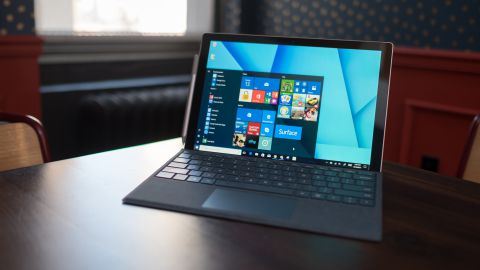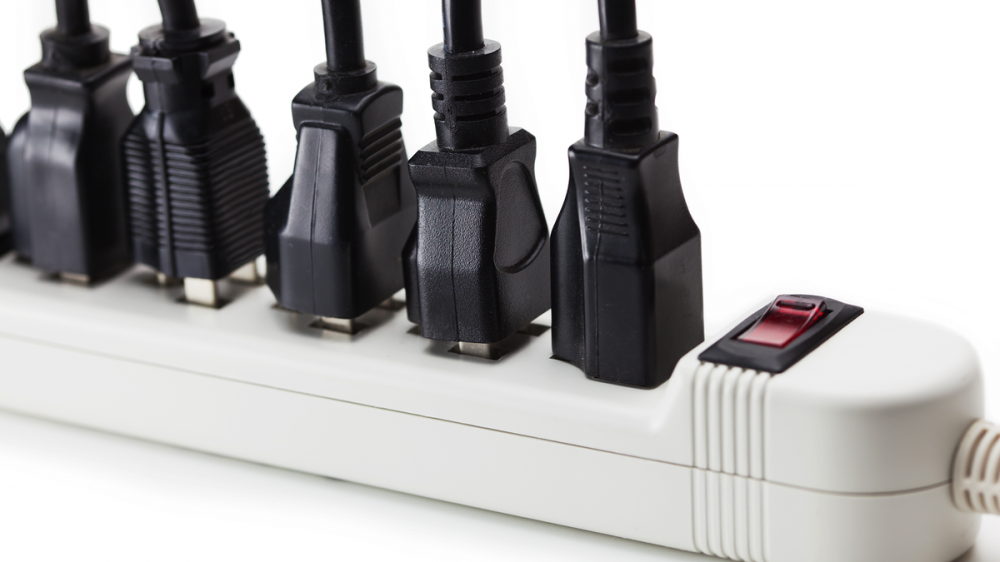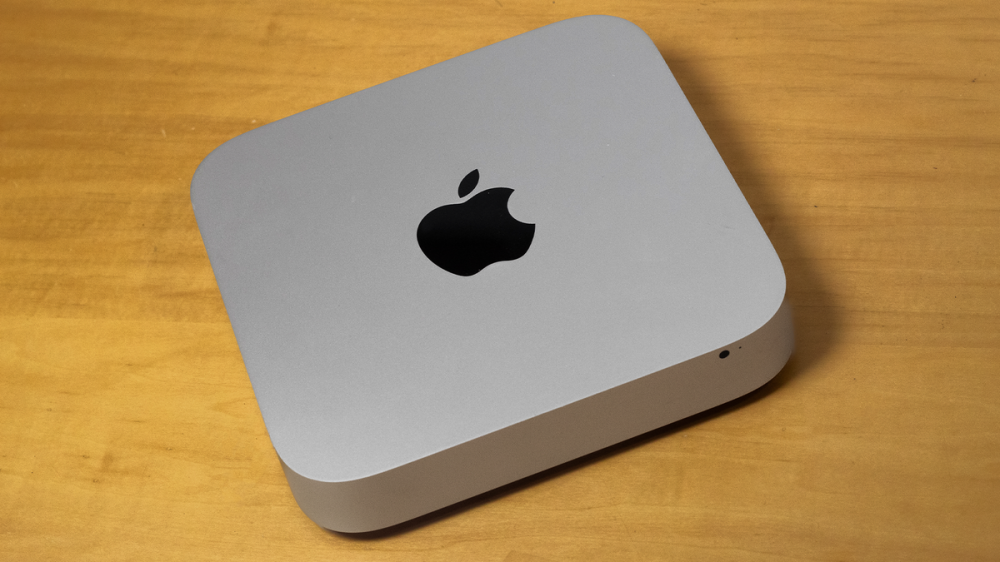We wouldn’t blame you for having missed Microsoft’s 12 Days of Deals across Windows 10 devices. After all, it only lasted for 12 days. But, what you might not have realized is that – even without a discounted price attached – the 2017 Surface Pro is already sold at a justifiable expense.
It’s the follow-up to the Surface Pro 4, and although it doesn’t formally use a numerical moniker in its packaging and marketing, it’s essentially the Surface Pro 5 in everything but the name.
That’s all fine and dandy, but in the current year, there’s a populated market of Windows tablets that’s becoming increasingly more dense as smaller manufacturers realize they can crowdsource to compete with the big dogs. So then, the question remains, did we need another Surface Pro? Well, the short answer is yes, we did.
With this new model, not only is the battery life better than ever, but we’re now blessed with a Surface Pro design that effectively epitomizes what a Windows tablet should look like, and how it should feel. It may retain a frame similar to what you were already accustomed to with the Surface Pro 4, but we assure you, this new Surface Pro makes some noticeable improvements with minimal negative side effects.
Starting with where you can buy it and for how much, let’s get up close and personal, analyzing why the Surface Pro has once again been treated to our ‘Recommended’ seal of approval.
SPEC SHEET
Here is the Surface Pro configuration sent to TechRadar for review:
CPU: 2.5GHz Intel Core i7-7660U (dual-core, 4MB cache, up to 4GHz with Turbo Boost)
Graphics: Intel Iris Plus Graphics 640
RAM: 16GB LPDDR3
Screen: 12.3-inch, 2,736 x 1,824 PixelSense display (Contrast ratio: 1,300:1, 100% sRGB color, 10-point multi-touch, 3:2 aspect ratio)
Storage: 512GB SSD (PCIe 3.0)
Ports: 1x USB 3.0, mini DisplayPort, microSDXC card reader (UHS-I), headphone/mic jack
Connectivity: 802.11ac Wi-Fi (2 x 2 MIMO), Bluetooth 4.1 (Low Energy)
Cameras: 8MP rear-facing, auto-focus camera (1080p HD); 5MP front-facing, 1080p HD camera
Weight: 1.73 pounds
Size: 11.5 x 7.93 x 0.33 inches (W x D x H)
Pricing and availability
Consistent with its predecessors, the refreshed Surface Pro costs $799 (£799, AU$1,199) to start, but it’s price escalates from there. For that entry-level price, you’re fetching yourself a Kaby Lake Intel Core m3 CPU paired with 4GB of RAM and 128GB of SSD storage.
Those specs aren’t ideal if your workload is anything like ours, so your best bet is to run with a Surface Pro configuration featuring an Intel Core i5 or i7 chips with more memory and storage. Currently, the Surface Pro maxes out at $2,699 (£2,699, AU$3,999) for an Intel Core i7 CPU paired with a 1TB SSD and 16GB of RAM.
Stacked up against, say, the latest 10.5-inch iPad Pro, Apple starts the conversation at $649 (£619, AU$979) for a tablet with Apple’s A10X processor and 64GB of SSD space. Meanwhile, the most heavily-equipped version goes for $949 (£889, AU$1,429) to offer 512GB worth of flash storage space and the very same CPU.
The 12-inch version has models that call for $1,129 (£1,099) and $1,329 (£1,269), each with an Intel Core i5 chip and housing 4GB RAM/128GB SSD and 8GB RAM/256GB SSD, respectively.
Considering that the new Surface Pro box no longer includes the Surface Pen and still doesn’t include the keyboard, the Samsung solution suddenly looks like a much better value than both the Surface Pro and always-accessory-challenged iPad Pro. It’s too bad, then, that its performance isn’t mind-blowing and neither is its design.
Still, while Microsoft pulling the Surface Pen out of the box appears to indicate that the new version is more expensive to produce, a Surface Pro purchased with both the Pen and Type Cover would surpass the price of a comparable Galaxy Book by just $100. Nevertheless, it remains a shame that the two aren’t bundled.
Design
At first glance, the new Surface Pro looks just like the last, the Surface Pro 4. It even has the same, admittedly gorgeous, 12.3-inch PixelSense touchscreen with a 2,736 x 1,824-pixel resolution.
But, a keen eye will notice key differences. For one, the magnesium-aluminum alloy frame is rounded at the edges more dramatically than before.
If you’ve been using a Surface Pro 4 frequently before picking this one up, your fingers will tell the difference before your eyes do.
Another key change comes in the hinge, which has been improved through drawing inspiration from the Surface Studio. The hinge now bends back even further than before to a new “Studio mode” that makes for a narrower, 165-degree angle at which to draw than before.
To that end, the hinge looks markedly different, clearly incorporating new parts to make this more dramatic angle possible, but operates in exactly the same way.
All in all, the new Surface Pro comes in at the exact same 0.33 inches (8.4mm) of thickness with its 1.73 pounds (786g) too remaining unchanged. Considering that Microsoft accomplished this while packing inside a 20% larger battery, it’s an impressive feat.
This is even before considering how Microsoft’s improved thermal design allowed it to make the Intel Core i5 version, as well as the expected Core m3 version, fanless devices.
The new Alcantara Type Cover is a marked improvement in comfort over the previous generation, and largely worth the slight uptick in asking price over the microfiber cloth version. The keys feel like they’re deeper set and come back from a press with more force than ever, and the material looks like it will stand the test of time. Now, if only a black (or purple) version would arrive already.
For one, Microsoft upped the pressure sensitivity of its pen to 4,096 levels of detectable pressure, meaning creators have more control over the width and intensity of their lines in illustrations or designs than before. Perhaps more importantly, the Pen now sports a much lower latency, meaning that the tip of your Pen has a far lower chance of “leading” the ink on the PixelSense display.
Finally, the Pen also supports tilt detection now, though only through the new Surface Pro – the other current Surface devices will get the support for this feature through a firmware update.
This feature will, again – short of some nifty navigation controls in some apps – largely matter most to true creators that would be concerned about representing tilt and direction of the strokes in their work.
To top it all off, the Pen also comes in new, slick colors platinum, black, cobalt blue and burgundy, designed naturally to match to the available colors of new Type Covers.
There’s no debating that both the new Surface Pen and Type Cover have earned their slight price hikes, but we remain disappointed in the lack of any bundling to save committed customers a bit of money for fully buying in on Microsoft’s products on day one.







